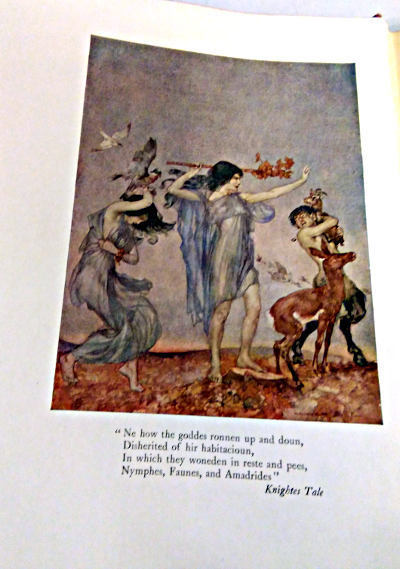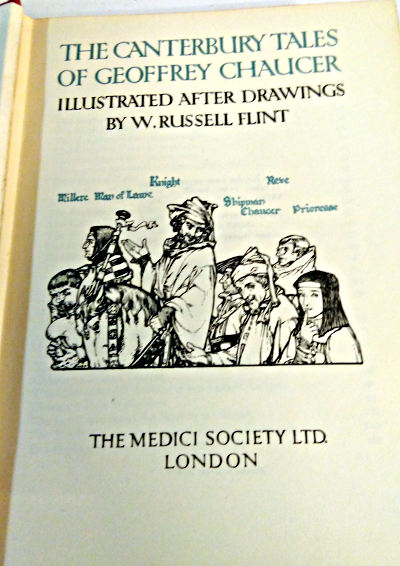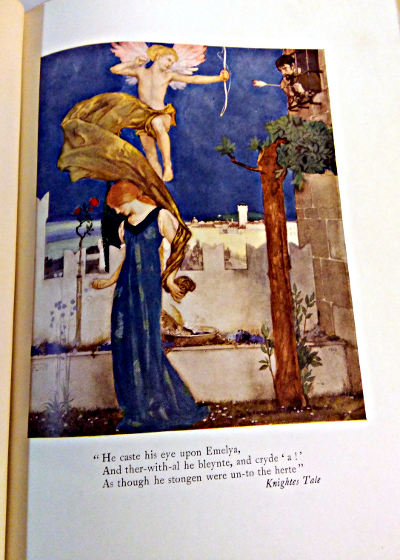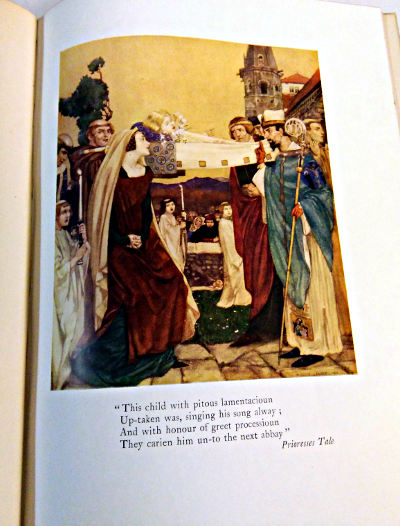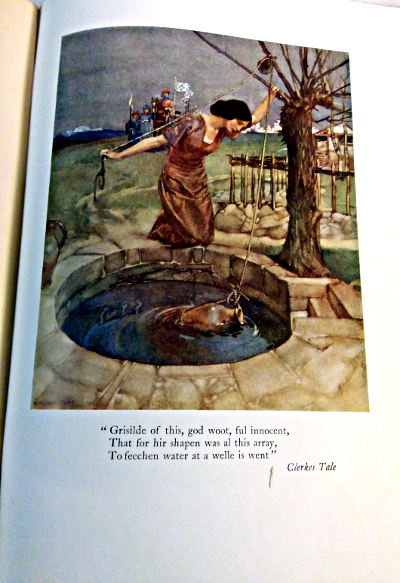About the book (from Wikipedia):
The Canterbury Tales (Middle English: Tales of Caunterbury) is a collection of over 20 stories written in Middle English by Geoffrey Chaucer at the end of the 14th century, during the time of the Hundred Years’ War. The tales (mostly written in verse, although some are in prose) are presented as part of a story-telling contest by a group of pilgrims as they travel together on a journey from Southwark to the shrine of Saint Thomas Becket at Canterbury Cathedral. The prize for this contest is a free meal at the Tabard Inn at Southwark on their return.
About the illustrator (from Wikipedia):
Sir William Russell Flint RA (4 April 1880 – 30 December 1969) was a Scottish artist and illustrator who was known especially for his watercolour paintings of women. He also worked in oils, tempera, and printmaking.
Flint was born in Edinburgh on 4 April 1880 and was educated at Daniel Stewart’s College and then Edinburgh Institution. From 1894 to 1900 Flint apprenticed as a lithographic draughtsman while taking classes at the Royal Institute of Art, Edinburgh. From 1900 to 1902 he worked as a medical illustrator in London while studying part-time at Heatherley’s Art School. He furthered his art education by studying independently at the British Museum. He was an artist for The Illustrated London News from 1903 to 1907, and produced illustrations for editions of several books, including H Rider Haggard’s King Solomon’s Mines (1907 edition), W. S. Gilbert’s Savoy Operas (1909) and Chaucer’s The Canterbury Tales (1912).
Flint was elected president of Britain’s Royal Society of Painters in Watercolours (now the Royal Watercolour Society) in 1936 to 1956, and knighted in 1947.
During visits to Spain, Flint was impressed by Spanish dancers, and he depicted them frequently throughout his career. He enjoyed considerable commercial success but little respect from art critics, who were disturbed by a perceived crassness in his eroticized treatment of the female figure.
Flint was active as an artist until his death in London on 30 December 1969.


